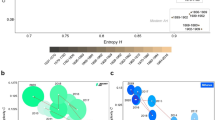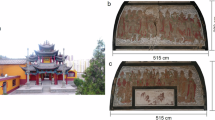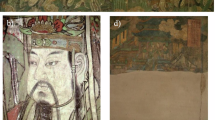Abstract
THE ruined temple of Vijayalaya Cholisvaram is situated in the village of Narthamalai (10° 30' N., 78° 45' E.) in Pudukottah State in South India, being about five miles to the north-east of Sittanna-vasal1 and about 33 miles, as the crow flies, from Tanjore2. The temple was probably built in the ninth century A.D. during the time of Vijayalaya, a king of the Chola Dynasty of South India. The details of the paintings, however, have either faded or disappeared, due to the vicissitudes of time and environment, so that it is very difficult to judge of the art as such. But circumstantial evidences go to show that the paintings were probably executed during the eleventh–twelfth centuries A.D., and at any rate, their date cannot be later than the fourteenth century A.D. If they belong to the eleventh–twelfth centuries A.D., they should have been contemporaneous with the Chola paintings in the Brihadisvara temple2 at Tanjore.
This is a preview of subscription content, access via your institution
Access options
Subscribe to this journal
Receive 51 print issues and online access
$199.00 per year
only $3.90 per issue
Buy this article
- Purchase on SpringerLink
- Instant access to full article PDF
Prices may be subject to local taxes which are calculated during checkout
Similar content being viewed by others
References
NATURE, 139, 114 (1937).
NATURE, 137, 867 (1936). Technical Studies (Harvard University), 5, 221–240.
Author information
Authors and Affiliations
Rights and permissions
About this article
Cite this article
PARAMASIVAN, S. Technique of the Painting Process in the Temple of Vijayalaya Cholisvaram in Pudukottah State. Nature 140, 198 (1937). https://doi.org/10.1038/140198b0
Issue date:
DOI: https://doi.org/10.1038/140198b0



